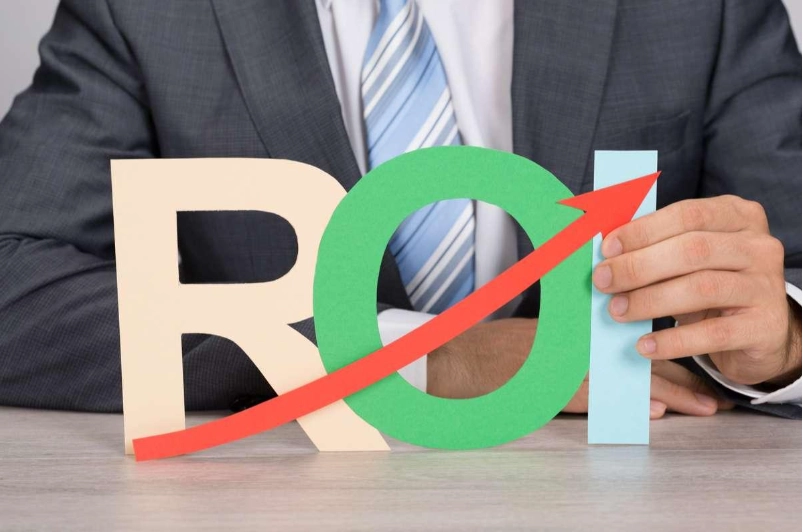Imagine you’ve invested money in advertising, business, or some other venture. The ROI formula helps determine whether your investment was profitable. The Return on Investment metric measures investment profitability. Simply put, it shows how much you earned or lost on your investments. Return on Investment helps entrepreneurs, marketers, investors, and even those who just want to evaluate their spending efficiency. Today, we’ll break down how to calculate it correctly and when it can be useful for you.
What Is ROI?
ROI is a way to measure how profitable your investment was.
For example:
- You invested $5,000 in advertising.
- Sales increased, and you earned $15,000 in revenue.
- But not all revenue is pure profit. Expenses must be accounted for.
This is where ROI comes in handy. It shows how well your investment performed and whether it’s worth repeating.
This metric is used in various fields:
- Business – to determine if a new project generates profit.
- Marketing – to evaluate which advertising works best.
- Investments – to choose the most profitable option.
- Real Estate – to assess if buying a property for rental income is worth it.
How to Calculate the ROI Formula?
The formula is very simple: ROI = (Net Profit / Investment) × 100%
Where:
- Net Profit = Revenue minus all expenses.
- Investment = The amount you invested.
Let’s look at a real-life example. Imagine you open a coffee shop. You invest $100,000 in renovations, equipment, and advertising. After a year, your net profit (after all expenses) is $150,000.
Now, let’s calculate the Return on Investment:
(150,000 – 100,000) / 100,000 × 100% = 50%
This means your investment’s profitability is 50%. Every dollar invested brought in an additional 50 cents of profit.
How to Calculate ROI in Marketing, Business, and Investments?
The ROI formula is simple, but its application varies across industries. Let’s break down some common cases.
ROI in Marketing
Imagine you launch an Instagram ad campaign.
- You invest $10,000.
- Your store gains new customers, increasing total revenue by $30,000.
- But! That’s not net profit. Suppose product costs and delivery expenses total $15,000.
Now, let’s calculate ROI: (30,000 – (10,000 + 15,000)) / 10,000 × 100% = 50%
So, your advertising generated a 50% return. Not bad! If this number is below 0%, you lost money. If it’s too low, you may need to optimize your campaign.

ROI in Business
Now, let’s look at a more interesting example. Imagine you launch an online store.
- Warehouse rent, advertising, and salaries cost you $100,000.
- After a year, your net profit is $180,000.
Now, calculate:
(180,000 – 100,000) / 100,000 × 100% = 80%
Great result! This means your investment paid off, and your business is running efficiently.
ROI in Investments
You buy an apartment for $1,000,000 and rent it out for $10,000 per month.
- Annual rental income: 10,000 × 12 = $120,000
Now, calculate ROI: 120,000 / 1,000,000 × 100% = 12%
This means your property generates a 12% return per year. Compared to bank deposits offering 7-10% interest rates, this is a solid investment.
Important! ROI isn’t just about numbers. It doesn’t account for risks, payback periods, or other factors. In real estate, you must consider repair costs, taxes, and potential vacancies. In business, competition, seasonality, and market changes play a role.

Limitations of ROI: What to Consider?
The ROI formula is a powerful tool, but it’s not always straightforward. Let’s explore cases where it can be misleading.
1. ROI Doesn’t Consider Time
- You invest in a startup and get an ROI of 100% after five years.
- You launch a business and get the same 100% ROI in one year.
The formula doesn’t show how long it took to achieve that return, but time matters! The faster an investment pays off, the better.
Solution: Use the average annual ROI formula:
Annualized ROI = ROI / Number of Years
In our example:
- Startup: 100% ÷ 5 = 20% per year
- Business: 100% ÷ 1 = 100% per year
Now, it’s clear the second option is better.
2. ROI Doesn’t Consider Risks
- A bank deposit offers an 8% annual return (low risk).
- A cryptocurrency investment might yield 300% or result in a total loss.
High ROI ≠ A Good Investment. Always assess the risks!
3. ROI Can Be Manipulated
Companies may exclude some costs (rent, salaries, taxes) to inflate ROI figures. This creates the illusion of high profitability. Solution: Always check what expenses are included in ROI calculations.
ROI Formula and Calculations – Video
Want to learn more about the ROI formula and how to use it correctly? Watch this video:
Alt: ROI Formula and Calculations – YouTube Video
Conclusion
The ROI formula is useful and informative when used correctly. Always consider time – ROI alone doesn’t show how quickly an investment pays off. Analyze risks – high profitability often means higher risks. Check all expenses – don’t fall for “inflated” ROI figures. Compare options – don’t just calculate ROI, analyze which option suits you best. It’s a great tool, but not a perfect one. Use it alongside other metrics to make the most accurate financial decisions!
FAQ
ROI shows how much profit you made from your investments. The formula is (Net Profit / Investment) × 100%. The higher the ROI, the better the investment.
In arbitrage, ROI measures profit from traffic investments. It helps evaluate campaign effectiveness.
ROI formula: (Net Profit / Investment) × 100%. Net profit = revenue minus expenses.













